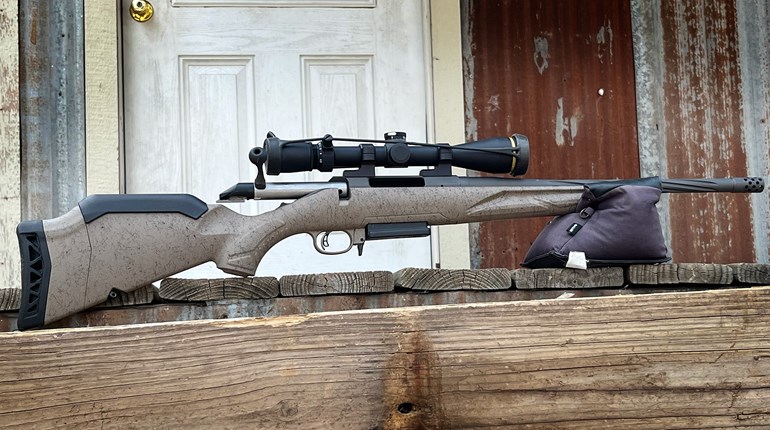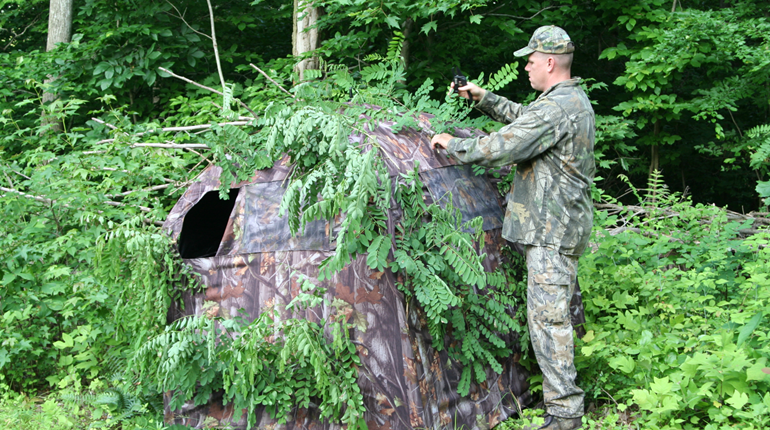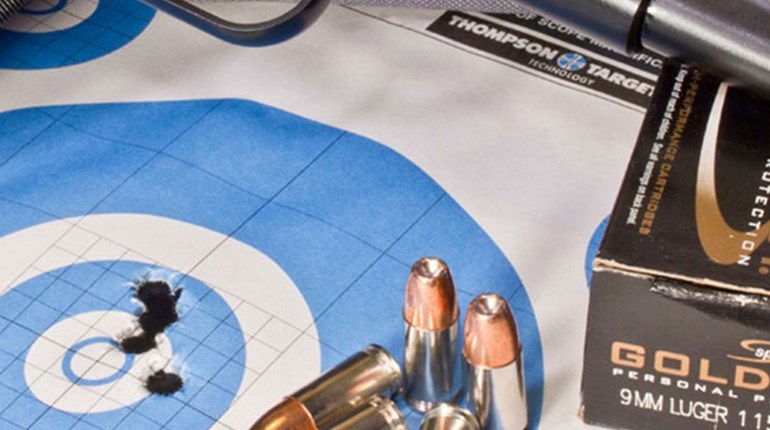
When I say “superstand,” most of my perverted buddies imagine a Texas tower blind overlooking a wheat field, complete with TV, stove, easy chair and other luxury items that make the great outdoors feel more like a penthouse. Trouble is, such deer stands usually stink for killing big bucks, because they’re generally where the hunter wants to be but not necessarily where the big bucks hang out. Rather, the word “superstand” refers to a rare stand location that consistently produces bucks regardless of the season or conditions. Most times hunters luck into them. But you can find your own superstand, or even make one, if you know what to look for.
In 30 years of deer hunting, I know firsthand of only two superstands, or stand locations where mature bucks regularly feed, chase does, loaf in early seasons, cruise in the pre-rut and sometimes even bed. Generally, superstand locations are found in cover where bucks feel safe; they’re frequently amid natural terrain funnels that concentrate deer movement; they hold food sources that attract deer year-around; they’re situated so wind isn’t a huge factor; they’re accessible without detection; and they overlook an area in a way that makes the sun favorable to the hunter. While most properties likely don’t have such a perfect stand location, many do. And most of them have already been found.
When I began scouting a new property years ago, I immediately found an east/west-running ridge that was covered in mature oaks and hickories. Squirrels abounded. At the bottom of the ridge, running parallel, a game trail looked like a deer highway. I walked it to find a suitable tree for a stand. Soon I spied an ancient oak that leaned over a creek. I discovered a line of 10-penny nails going up its mighty trunk to a huge knot. Only a half-inch of each nail head was visible, indicating they’d been there a long time. Now I was really jacked.
While sitting on the knot, I saw an open field 40 yards to the north that would provide an easy entry/exit point. I knew the stand would be ideal for a south wind because it would blow my scent into the field and not toward the ridge trail; an east or west wind would blow directly up or down the creek. I hunted it on opening day of bow season.
After first light I found it strange that the Oklahoma wind had died and the deer in the field were not smelling me. Using a wind checker, I learned why: The ridge was blocking most of the wind and causing it to jet upward. That morning I observed deer moving along the trail, coming down over the ridge and coming in from the field to eat the white oak acorns that were raining down like popcorn from a theater concession stand.
A week later I hunted it again. Soon I heard a noise and turned to see a giant buck enter the woods, cross the creek under me and continue toward the ridge trail before stopping to munch an acorn. I shot the 180-some-inch monster at 12 yards. Since then, I’ve killed many bucks there and even found an arrowhead.
Years later I learned exactly why, via Google Earth, it was such a good spot. It was the pinch point of a natural funnel connecting two of the biggest bodies of mature hardwoods for miles around. Past the far side of the field, a neighbor had crops. And, perhaps the key feature, the ridge concentrated deer movement while mitigating the effect of the wind. Over the years I’ve killed deer there from early October to late January.
To find a superstand, first study topo maps and aerial photographs of an area to understand the big picture. Look for hardwood funnels that connect larger areas of cover. Think like a deer and consider how you’d travel to food sources undetected. Then identify terrain features such as steep creek banks, waterways, ridges, houses, downed fences, open fields or anything else that influences and concentrates deer movement to smaller, more predictable routes.
Next, study the area’s predominant wind. If its direction is north/south like most places, find funnels and trails that run east/west so the wind doesn’t blow directly up or down them. Then make sure the prospective stand location allows stealthy entry and exit. A creek is perfect, because it will mask your profile, scent and sound. (I’m convinced this is critical.) And while it’s best if your path to the stand is natural, it can be made. Consider mowing, raking or placing rocks along your entryway before the season to avoid traversing crunchy leaves.
Put boots on the ground to confirm the presence of mast, cover and, by using trail cams or a distant observation post, mature bucks. If all these things check out, hang your stand so you can see down the funnel from an angle where the sun is never directly in your eyes. Ideally, your stand will be close enough to the edge of a field, food plot or food source so that you can shoot into it during the rut, but your stand should also let you shoot into the thick stuff of the funnel for the majority of the season.
Finally, sit the stand, observe deer movement and the effects of the wind, and don’t become too married to the spot. (Don’t move after a mere sit or two, either.) Finding a true superstand location can take years of observation and adjustment. This is why discovering an old stand is great—often it means generations of hunters have done the work for you.
While it’s possible to sweeten a good location so it becomes a superstand—a tiny food plot in deep cover where you know deer already frequent is a good bet—it’s best to not fight nature. Don’t expect to plant a food plot just anywhere, install the Taj Mahal over it and kill giant deer annually. Instead, let the deer and the land show you to your superstand.




































